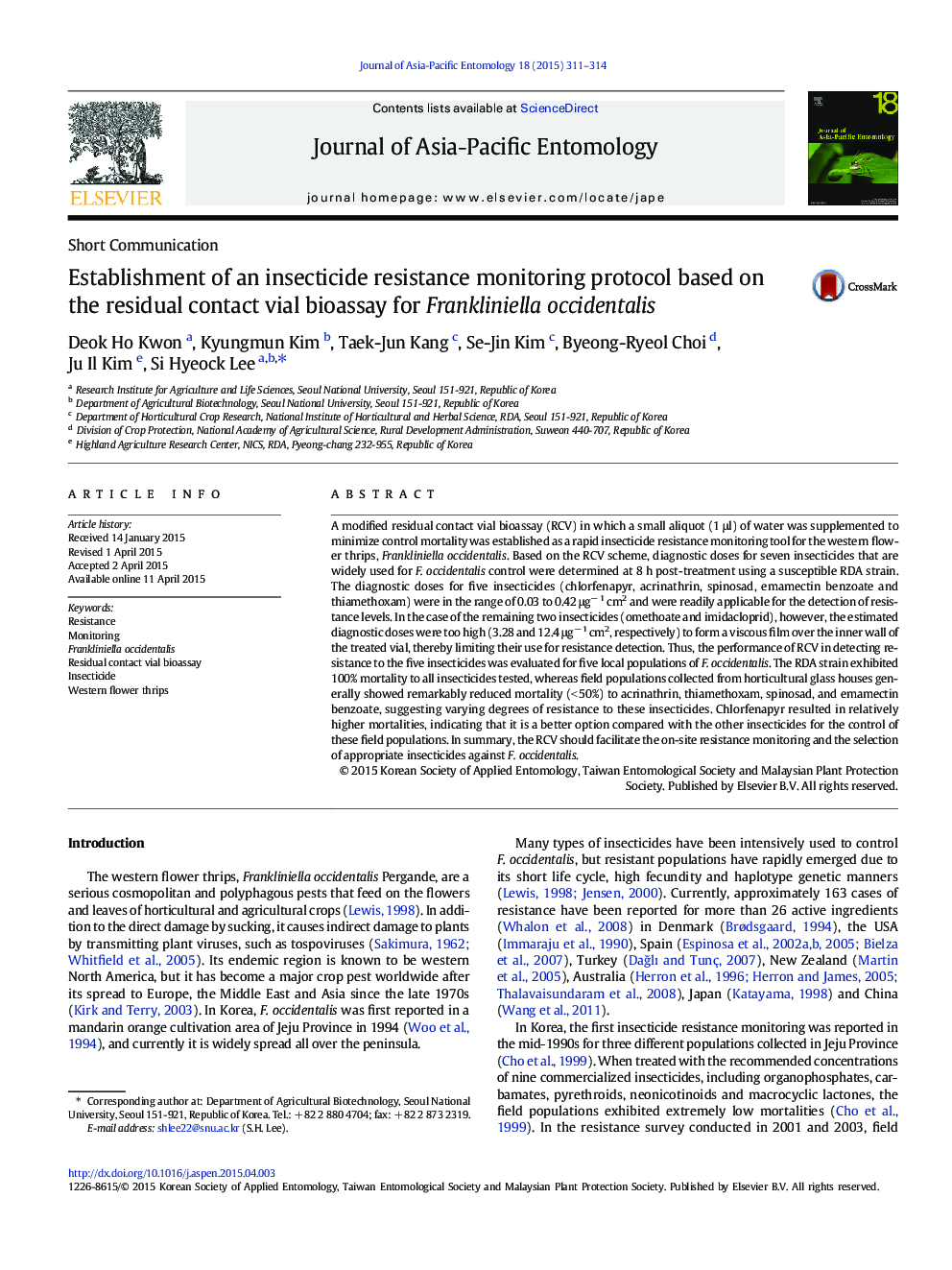| Article ID | Journal | Published Year | Pages | File Type |
|---|---|---|---|---|
| 4524457 | Journal of Asia-Pacific Entomology | 2015 | 4 Pages |
•Resistance monitoring protocol for F. occidentalis was established based on RCV bioassay.•Supplement of small amount of water to the vial minimized the control mortality.•Field populations exhibited varying degrees of resistance to most insecticides tested.•RCV method would provide basic information for the selection of appropriate insecticides.
A modified residual contact vial bioassay (RCV) in which a small aliquot (1 μl) of water was supplemented to minimize control mortality was established as a rapid insecticide resistance monitoring tool for the western flower thrips, Frankliniella occidentalis. Based on the RCV scheme, diagnostic doses for seven insecticides that are widely used for F. occidentalis control were determined at 8 h post-treatment using a susceptible RDA strain. The diagnostic doses for five insecticides (chlorfenapyr, acrinathrin, spinosad, emamectin benzoate and thiamethoxam) were in the range of 0.03 to 0.42 μg− 1 cm2 and were readily applicable for the detection of resistance levels. In the case of the remaining two insecticides (omethoate and imidacloprid), however, the estimated diagnostic doses were too high (3.28 and 12.4 μg− 1 cm2, respectively) to form a viscous film over the inner wall of the treated vial, thereby limiting their use for resistance detection. Thus, the performance of RCV in detecting resistance to the five insecticides was evaluated for five local populations of F. occidentalis. The RDA strain exhibited 100% mortality to all insecticides tested, whereas field populations collected from horticultural glass houses generally showed remarkably reduced mortality (< 50%) to acrinathrin, thiamethoxam, spinosad, and emamectin benzoate, suggesting varying degrees of resistance to these insecticides. Chlorfenapyr resulted in relatively higher mortalities, indicating that it is a better option compared with the other insecticides for the control of these field populations. In summary, the RCV should facilitate the on-site resistance monitoring and the selection of appropriate insecticides against F. occidentalis.
Graphical abstractFigure optionsDownload full-size imageDownload as PowerPoint slide
